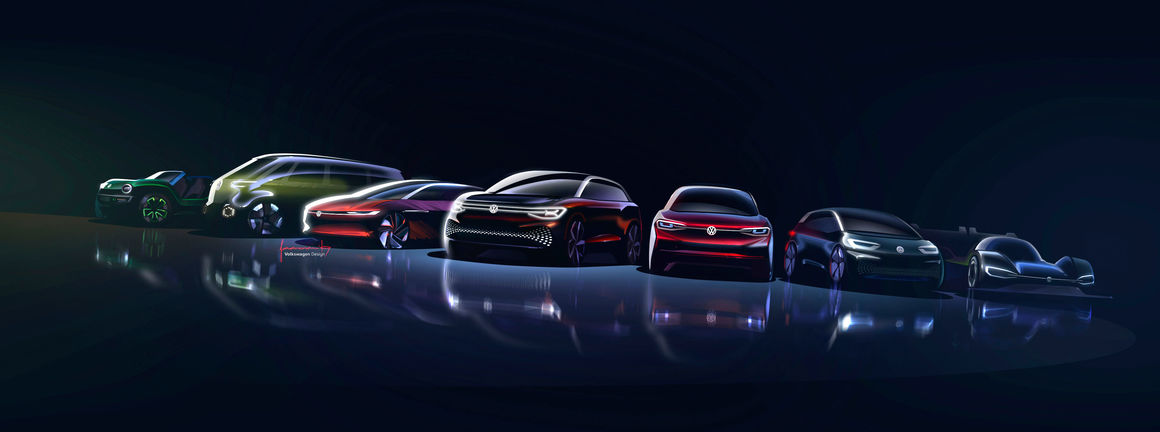Read The Full Article On: Investorplace
Last September, Lordstown Motors (LMC) (NASDAQ:RIDE) (before it was trading as RIDE stock) took a field trip to the White House. The electric pickup truck startup was riding high on publicity from President Donald Trump’s administration for reopening an Ohio General Motors (NYSE:GM) plant.

“Well, the area was devastated when General Motors moved out, and then we worked together, and we made the deal on the plant,” said President Trump at the unveiling. “And it’s an incredible piece of science, technology. It’s an incredible thing.”
If only investors agreed.
Since September, RIDE stock has lagged other high-flying electric vehicle stocks, dropping 86% through October. Even after a robust post-election recovery, its shares are still 20% below their peak. Meanwhile, other EV startups like Nio (NYSE:NIO) and Li Auto (NASDAQ:LI) continue to rocket upwards.
So, why the investor hesitation for a company that seems to have it “made”? That’s because LMC management is banking on investor amnesia. By plastering over old failures in a three-step “do-si-do,” CEO Steve Burns is attempting to dance under the new banner of “Lordstown.”
But just like the dance move, he’s circling around and ending up right back where he started: exaggerating the truth and hoping investors don’t notice. And here’s how.
RIDE Stock Step No. 1: Hide Your Old Sins
Investors thumbing through Lordstown’s investor presentation will see typical Wall Street fodder: projections of massive revenues, a vast untapped market, and a smiling set of manager headshots with 25, 35 or more years of experience each.
Careful readers will notice, however, that the CEO, CFO and COO all have something in common: they all used to work at Workhorse (NASDAQ:WKHS), an electric vehicle maker. And it’s a history they would surely want investors to forget.
In 2009, Steve Burns (who would later establish LMC) founded AMP Holdings, a company that outfitted midsized utility cars with electric drivetrains. The company was a failure, generating just $602,840 of revenues while losing $21.3 million through 2012. Then in 2013, the company bought Workhorse, an RV chassis maker, from trucking giant Navistar (NYSE:NAV). Expectations were high — Workhorse had a factory capable of churning out 30,000 chassis per year, and Burns quipped that the company could become “just like Tesla” in electric trucks.
Instead, the company continued to lose even more money. By the time he left Workhorse in 2019, the company had burned through another $118 million and lost almost $50 for every $1 revenue generated. Its largest customer, United Parcel Service (NYSE:UPS), only ever bought 1,405 vehicles.
Starting Over with More of the Same
American investors are known for giving second chances. And for a good reason: company founders from Henry Ford to Bill Gates failed at their first ventures before trying something different. Bill Gates stumbled with Traf-O-Data, a company that read traffic data from paper tapes, before changing direction and starting Microsoft (NASDAQ:MSFT).
Lordstown’s management would also love investors to believe they’re doing something new. Outside of its “manager experience” page, it only mentions Workhorse ONCE in its 40-page investor presentation, where it lists Workhorse (IP) as a “favorable relationship.”
But have they truly changed direction? Not really.
Cautious investors would have to scour Workhorse’s filings for the details: In November 2019, Workhorse agreed to license out its W-15 pickup truck IP to Lordstown for three years. In exchange, Workhorse would get 10% of RIDE stock and receive licensing fees.
In other words, Workhorse still owns some of the IP for the Endurance pickup truck. The managers are still the same (including the leader of its sales team), and they’re still working at least partly with the same W-15 pickup truck technology that they’ve been tinkering with since 2016. What’s different this time is they’re working with almost $1 billion from a special purpose acquisition company (SPAC) merger/IPO, rather than just $76 million of raised capital.
Step No. 2: Inflating Success and Failing to Deliver
A colossal failure of Workhorse came from overpromising and under-delivering. And at LMC, Burns continues this pattern in the second step of his “do-si-do.”
In its August presentation, LMC claimed to have “~$1.4bn of existing pre-orders” (page 10), or close to 40,000 vehicles. That’s a massive number for a startup company; Tesla only managed 6,500 pre-orders in its first year.
Not so fast.
A closer look at Lordstown’s balance sheet shows a different story. Automotive accounting generally considers “pre-orders” as a financial commitment from customers – accountants list these sums under “deferred revenue” or “customer deposits” on a company’s balance sheet. Today, Tesla holds $2 billion of these commitments, while legacy General Motors holds $3 billion.
So, how much of that $1.4 billion “pre-orders” filtered to LMC’s SEC-filed balance sheet? Zero.
Put another way, LMC’s “pre-orders” aren’t commitments. Instead, they’re “letters of intent” – non-binding agreements that require zero cash deposit. And it’s not the first time the company has pulled this trick. In 2018, Workhorse also touted having a “1,000-unit UPS order” for his company’s new C-Series trucks. Fast forward to 2020, and Workhorse hasn’t yet delivered any significant portion. A call to the firm’s investor relations rep confirms that these “orders” are, in fact, also “non-financial letters of intent.”
In its November news release, LMC quietly changed the wording on its press release to say it had “received approximately 50,000 non-binding production reservations.”Perhaps their lawyers finally wised up to the threat of SEC enforcement. Or maybe the company has realized that publishing these non-standard figures still fools media reporters into calling them “pre-orders.”
Step No. 3: Selling Pickups to Wall Street instead of Main Street
In the final step of the “do-si-do,” Lordstown swings back to its old dance partner: Wall Street suckers.
To avoid building a national distribution network (since most states have restrictions against new car dealerships), Lordstown has wisely decided to court the commercial fleet market. It’s an excellent way to grow fast – startup EV maker Rivian, for instance, has already inked a 100,000-unit deal with Amazon (NASDAQ:AMZN). Meanwhile, Lordstown’s chosen market is one of contractors, utility workers and municipalities — a group that needs plenty of cheap, reliable, powerful work vehicles.
There’s just one problem: the Endurance pickup truck seems designed to wow investors, not fleet operators.
Firstly, there’s the price. The Endurance’s sky-high $52,500 starting price puts it far above most commercial fleet budgets. And that’s even before essential modifications, such as roof racks, utility beds and loading ramps, which can add thousands of dollars to MSRP. It’s the reason why the utilitarian Ford F-150 beats out the premium-priced Dodge Ram among contractors. There’s little need for fully leather interiors when you want to haul your tools from point A to B.
Secondly, there’s towing power, the lifeblood of all commercial trucks. Despite having 600 horsepower under the hood, the Endurance will produce only 7,500 lbs of towing capacity – about what the entry-level Ford F-150 models pump out. That’s unacceptable for the Endurance’s price tag. A similarly-priced Chevy Silverado 3500HD, by comparison, will tow 35,500 lbs – the kind of muscle power that heavy contracting work needs.
Finally, there’s the competition. By the time Lordstown ramps up production in 2022, it’s going to have three problems on its hands: 1) the all-electric Ford (NYSE:F)/Rivian F-150, 2) the GM/Nikola Badger, and 3) the Tesla (NASDAQ:TSLA) Cybertruck. And each competitor will have an existing nationwide servicing network, an essential component when choosing work fleets.
Can Lordstown Keep Dancing?
In LMC’s defense, its management has tried its hardest to keep investors happy. In October, the company released a video of the Endurance pickup dragging a Ford F-150 Lariat across wet grass. And in November, they announced they upped their estimate to50,000 “non-binding production reservations.”
While these stunts might wow armchair investors, experienced pickup truck operators would see straight through the ruse. Take the tug-of-war competition: Ford’s built their F-150’s from aluminum since 2015, so its lighter chassis would easily get dragged by the Endurance’s staggering weight (it’s also the reason why the Endurance’s 600hp can only tow as much as a 290hp Ford F-150). Load up the back of the F-150 with a 1,500lb payload of lithium-ion batteries and see what happens.
And as for reservations? The news came paired with LMC pushing back production from January to September 2021. Any serious commercial buyer might consider canceling orders.
Will RIDE Stock Succeed?
Investors looking to short Lordstown might still want to think twice. Shortable shares are supremely hard to come by, and fee rates can top 97% for these hard-to-find shares. (Note: if you own RIDE stock, make sure your brokerage is compensating you for loaning shares out).
Lordstown also finds itself flush with IPO cash in a fast-growing industry. Spent it wisely in R&D and marketing, and the company will go far; a lousy history at Workhorse doesn’t doom LMC to failure.
But WILL Steve Burns and LMC succeed? The odds aren’t in his favor.
“I have watched this comedy act evolve, but the time has finally come for these guys,” said Stephen Baksa, a 6% owner of Workhorse, of Burns’ departure from his previous company.
Today, it’s a fresh slate. But unless LMC can focus on Main Street rather than Wall Street, no amount of IPO money will save the firm from eventual bankruptcy. Investors be warned. We’ve seen this dance before.

